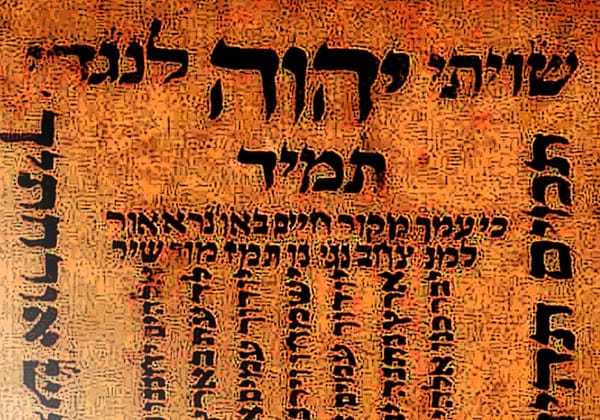It was a ground-breaking discovery that was hiding in plain sight for more than half a century. Utilizing advanced multispectral imaging technology, Tel Aviv University researchers have discovered an “invisible” Hebrew inscription on the back of a pottery shard. The pottery shard has been on display at the Israel Museum for more than 50 years. The ostracon (ink-inscribed pottery shard) was dated to 600 BCE, the era of the First Temple and Kingdom of Judah roughly to the time of Nebuchadnezzar’s attack of Jerusalem. The piece of pottery was first unearthed in a poor condition in 1965 at the desert fortress of Arad.
“Tel Arad was a military outpost a fortress at the southern border of the kingdom of Judah—and was populated by 20 to 30 soldiers,” said Dr. Anat Mendel-Geberovich of Tel Aviv University. “Most of the ostraca unearthed at Arad are dated to a short time span during the last stage of the fortress’s history, on the eve of the kingdom’s destruction in 586 BCE by Nebuchadnezzar. Many of these inscriptions are addressed to Elyashiv, the quartermaster of the fortress. They deal with the logistics of the outpost, such as the supply of flour, wine, and oil to subordinate units.”
According to TAU researchers, the Hebrew inscription on its front side begins with a blessing by Yahweh and then discusses money transfers.
“While its front side has been thoroughly studied, its back was considered blank,” said Arie Shaus, one of the scientists from Tel Aviv University. “Using multi-spectral imaging to acquire a set of images, Michael Cordonsky of TAU’s School of Physics, noticed several marks on the ostracon’s reverse side. To our surprise, three new lines of text were revealed.”
As a result, the researchers deciphered 50 characters, comprising 17 words, on the back of the ostracon. The message on the back was a continuation of the Hebrew Inscription found on the front part of the shard.
“The new inscription begins with a request for wine, as well as a guarantee for assistance if the addressee has any requests of his own,” said Arie Shaus. “It concludes with a request for the provision of a certain commodity to an unnamed person, and a note regarding a ‘bath,’ an ancient measurement of wine carried by a man named Ge’alyahu.”
This newly-discovered Hebrew inscription begins with a request for wine and continues with a guarantee for assistance if the addressee has any special requests. Then It concludes with a request for the provision of a certain commodity to an unnamed person and a note regarding a ‘bath’ (an ancient measurement of wine) carried by a man named Ge’alyahu. The newly-discovered text appears to be the continuation of the originally discovered message. The reverse side of the pottery shard carried the rest of the ancient letter the researchers were not able to see it when they originally studied it.
On a larger scale, this discovery stresses the importance of using multi-spectral imaging analysis on materials traditionally used for inscriptions. How many pieces of ostraca might have been dismissed as unremarkable during the digs because no one noticed the inscriptions not visible to the human eye? With new technology, the future may hold few additional surprises. Just as with this piece of pottery we may yet discover new texts on the items previously studied and now held in museums and collections.
Original Sources: Jerusalem Post and Newsweek










Member discussion